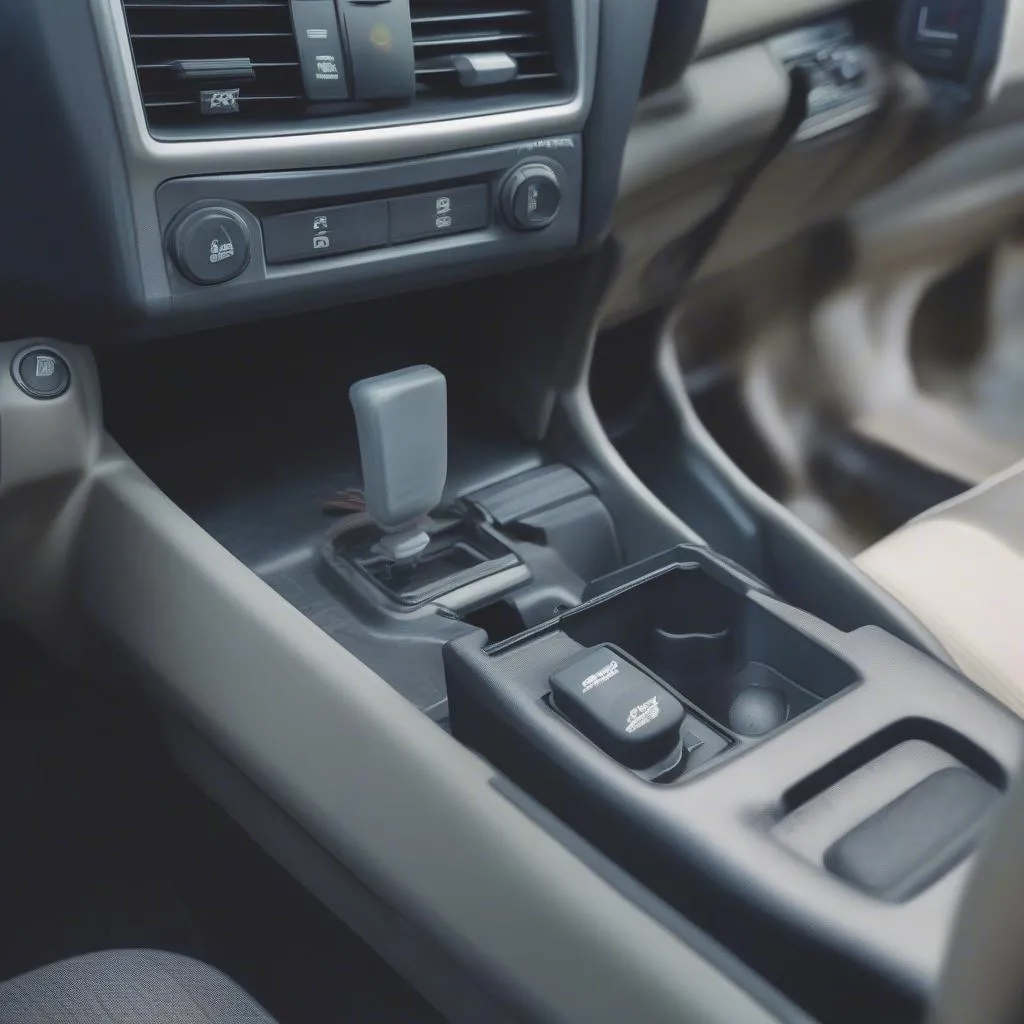Let’s face it, diagnosing and repairing your 2004 Honda CR-V can be a real headache, especially when you’re trying to figure out where the OBD port is! Imagine this: You’re stuck on the side of the road, your trusty CR-V has decided to play dead, and you need to get it checked out. But you can’t even find the OBD port to connect your scanner! Sound familiar?
Why Does The OBD Port Location Matter?
The OBD (On-Board Diagnostics) port is your gateway to understanding what’s going on under the hood of your vehicle. It’s the little connector that allows you to plug in a diagnostic scanner, which can read the car’s computer codes and reveal any potential issues. This is a vital tool for both professional mechanics and DIY enthusiasts. For example, you might use an OBD scanner to:
- Identify a Check Engine Light: When that dreaded light illuminates on your dashboard, the OBD port can help you figure out why.
- Diagnose Engine Performance Problems: Is your CR-V running sluggishly? The OBD port can help pinpoint the issue.
- Reset Service Reminders: Need to reset your oil change reminder? You can do it using the OBD port.
- Monitor Real-Time Data: Want to see your vehicle’s live engine data, such as speed, engine RPM, and fuel consumption? The OBD port can provide this information.
Where Is The OBD Port on a 2004 Honda CR-V?
Finding the OBD port on a 2004 Honda CR-V is actually pretty straightforward. It’s typically located under the dashboard, on the driver’s side, near the steering column. Look for a 16-pin connector. You might need to remove a small panel or access cover to access the port.
 2004 Honda CR-V OBD port location under the driver's side dashboard
2004 Honda CR-V OBD port location under the driver's side dashboard
Don’t panic if you can’t find it! There are a few resources you can use to locate the OBD port in your specific vehicle:
- Your Owner’s Manual: The owner’s manual for your 2004 Honda CR-V should have a diagram showing the location of the OBD port.
- Online Resources: Several online websites provide detailed information about OBD port locations for different vehicle models. For example, you can search for “2004 Honda CR-V OBD port location” on Google or consult a dedicated automotive forum.
Troubleshooting Tips for Finding Your OBD Port:
- Check the Fuse Box: Make sure the fuse for the OBD port is not blown. You can find the fuse box in the engine compartment or under the dashboard.
- Use a Flashlight: A flashlight can help you see better, especially if the port is located in a tight space.
- Remove Obstacles: If there are any obstacles blocking the port, such as a floor mat or a phone holder, remove them.
- Consult a Mechanic: If you’re still having trouble finding the OBD port, you can always ask a mechanic for help.
Frequently Asked Questions About 2004 Honda CR-V OBD Port:
Q: Can I use any OBD scanner on my 2004 Honda CR-V?
A: Not all scanners are compatible with all vehicles. Make sure you choose a scanner that is specifically designed for your vehicle’s make and model year. A “Dealer Scanner” for European cars may not work properly with your Honda.
Q: What if the OBD port is damaged or missing?
A: A damaged or missing OBD port can be a serious problem, as it prevents you from accessing your vehicle’s diagnostic system. If this happens, you will need to have it repaired by a qualified mechanic.
Q: How can I protect the OBD port on my 2004 Honda CR-V?
A: Here are a few tips to keep your OBD port in good condition:
- Avoid plugging in unnecessary devices: Only use a diagnostic scanner or other authorized devices in the OBD port.
- Keep the area around the port clean: Regularly clean the port and surrounding area to prevent dirt and debris from accumulating.
- Be cautious when using the OBD port: Don’t force the scanner connector into the port, and be careful not to damage the port’s pins.
What’s Next?
Now that you’ve located the OBD port in your 2004 Honda CR-V, you’re ready to tackle any diagnostic challenges head-on! Whether you’re a seasoned mechanic or a DIY enthusiast, understanding the OBD port is essential for maintaining your vehicle’s health.
 2004 Honda CR-V OBD port location diagram
2004 Honda CR-V OBD port location diagram
Still have questions? Need expert help with your 2004 Honda CR-V diagnostics? Contact us today for a free consultation! We have a team of expert technicians available 24/7 to assist you.
Contact Us:
WhatsApp: +84767531508
Disclaimer: We are not responsible for any damage caused by improper use of the OBD port. It is essential to consult with a qualified mechanic or follow the manufacturer’s instructions before performing any diagnostic or repair procedures on your vehicle.
We hope this article was helpful!
Further Reading: